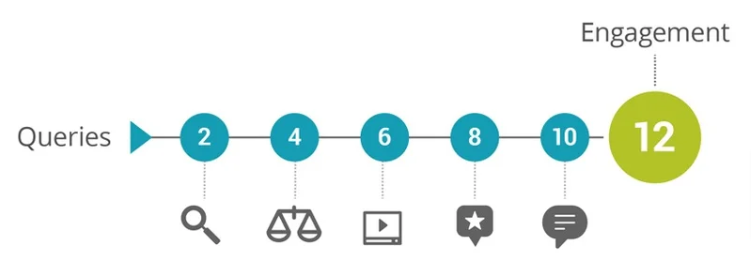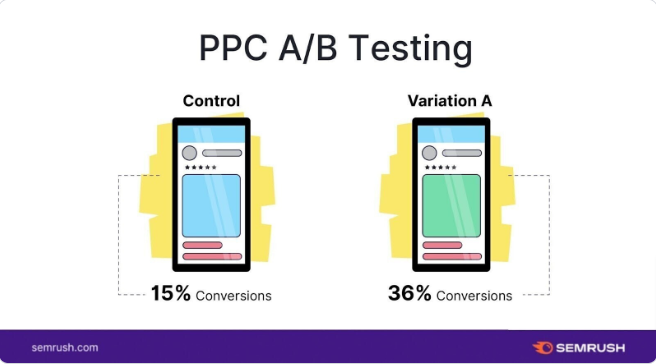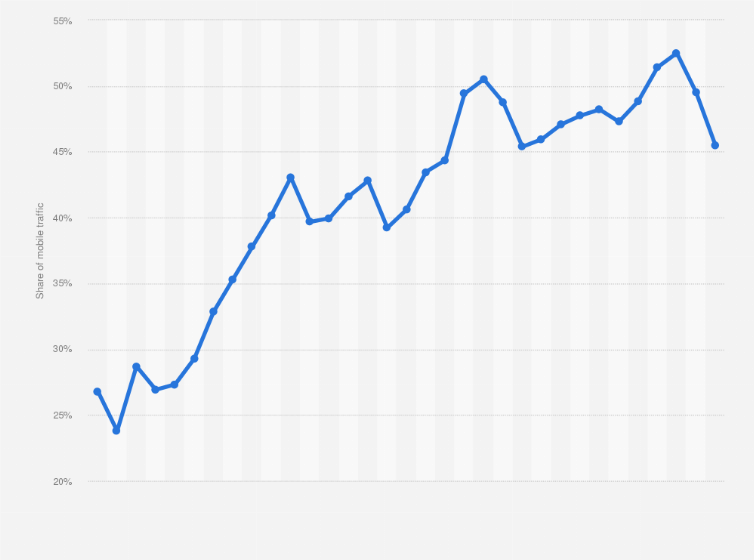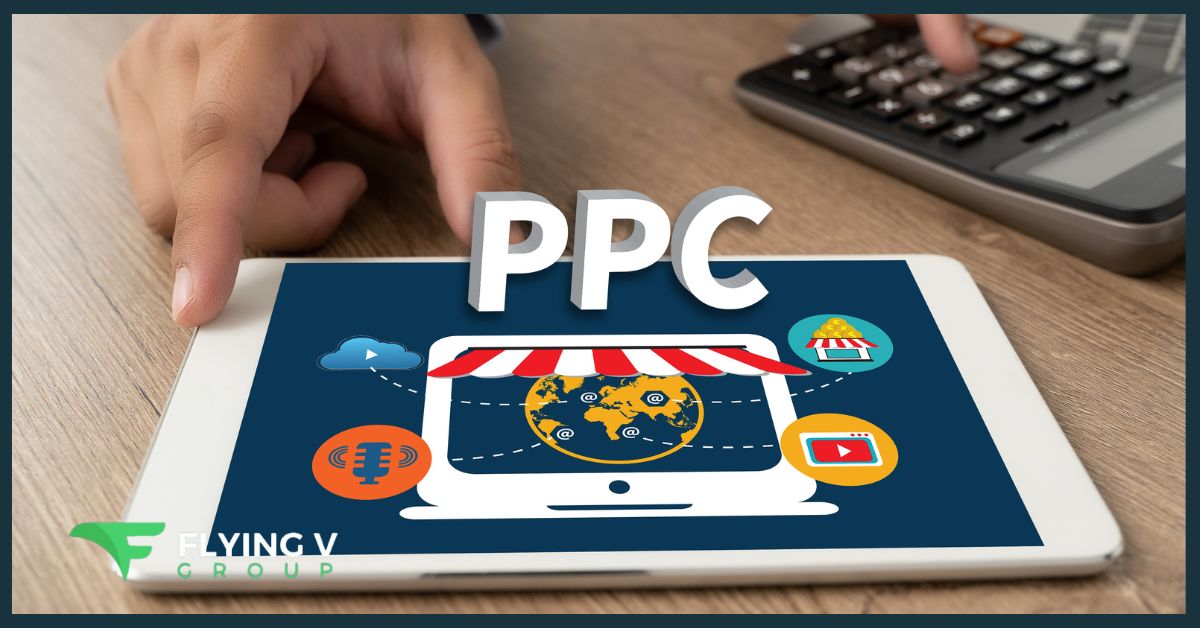In today’s fiercely competitive digital landscape, mastering the art of crafting a successful PPC for B2B strategy can feel like an intimidating challenge.
Countless B2B companies find themselves grappling with the intricacies of PPC, often wasting precious resources on lackluster campaigns that lead to nothing but disappointment.
These missed opportunities not only chip away at potential ROI but also leave marketers and business owners increasingly frustrated.
In this comprehensive guide, we’ll unveil the blueprint to building an unbeatable B2B PPC strategy that is perfectly tailored to the unique market dynamics of vibrant Orange County.
- What is PPC for B2B
- Setting Up Your PPC for B2B Strategy
- Creating Effective B2B PPC Campaigns
- How to Manage and Optimize Your B2B PPC Campaigns
- Case Study: Successful Orange County PPC Strategies
- Conclusion
- FAQ Section:
- Q1: How can PPC for B2B benefit businesses?
- Q2: What common challenges does PPC for B2B sove for marketers?
- Q3: Are PPC campaigns cost-effective for B2B companies?
- Q4: How can I get started with PPC for my B2B business?
- Q5: Can I track the success of my B2B PPC campaigns?
What is PPC for B2B
PPC for B2B, short for “Business-to-Business Pay-Per-Click,” is a savvy digital marketing strategy where companies promote their products to other businesses through paid online advertising.
In this context, when we say “business,” we’re talking about companies, enterprises, or organizations, not individual consumers.
PPC advertising involves displaying ads across various digital platforms like Google, Bing, LinkedIn, Facebook, and other relevant websites.
What sets B2B PPC apart is that the target audience is other businesses or the decision-makers within those businesses.
In a B2B PPC campaign, advertisers bid on specific keywords that are related to their offerings being made.
The ad pops up when a user searches for those keywords or meets the specified targeting criteria. Advertisers only pay when someone clicks on their ad, hence the term “Pay-Per-Click.”
The ultimate goal of B2B PPC is to drive high-quality traffic, generate valuable leads, and eventually convert those leads into profitable business opportunities within the B2B realm.
This incredible approach enables businesses to effectively reach their desired audience, boost their brand visibility, and accurately measure the success of their marketing efforts.
Differences between B2B and B2C PPC
Understanding the nuances between B2B (Business-to-Business) and B2C (Business-to-Consumer) PPC advertising is crucial in navigating the world of online marketing.
These two approaches cater to distinct target audiences and business models, and here’s a breakdown of their key differences:
1. Target Audience: The first major distinction lies in the target audience. B2B PPC focuses on marketing products or services to other businesses, addressing decision-makers, professionals, or companies seeking specific business solutions. On the other hand, B2C PPC aims at individual consumers with diverse interests and preferences.
2. Buying Cycle: Another significant factor is the buying cycle disparity. B2B purchasing behavior typically involves a longer and more intricate process, with multiple stakeholders and extensive research before sealing the deal. Meanwhile, B2C buying cycles are relatively shorter, driven by immediate needs and consumer desires.
3. Keyword Complexity: When it comes to keywords, B2B PPC campaigns often revolve around specialized and technical terms, catering to an audience searching for industry-specific solutions. Conversely, B2C PPC campaigns may use more general keywords, appealing to consumer emotions, preferences, or immediate requirements.
4. Ad Copy and Creatives: Crafting the perfect ad copy is an art in itself. In B2B advertising, the focus is on showcasing expertise, addressing pain points, and highlighting tangible business benefits. On the flip side, B2C ad copy tends to play on emotional appeals, discounts, or unique selling points to capture the hearts of consumers.
5. Landing Pages: Landing pages hold the key to conversion success. B2B landing pages are content-rich, providing in-depth information to assist informed decision-making by potential business clients. On the other hand, B2C landing pages are designed for a seamless user experience, encouraging swift and easy conversions.
6. Advertising Platforms: Both B2B and B2C PPC can utilize popular platforms like Google Ads and social media advertising. However, B2B marketers often find their niche on LinkedIn, where the business-focused audience congregates. Meanwhile, B2C marketers may focus their efforts on platforms like Facebook and Instagram, where they can reach a broader consumer user base.
7. Metrics and KPIs: When it comes to measuring success in PPC campaigns, we need to consider different metrics and KPIs for B2B and B2C approaches. For B2B campaigns, the key focus is on lead quality, conversion rates, and return on investment (ROI). On the other hand, B2C campaigns put more emphasis on click-through rates (CTRs), conversion volume, and cost per acquisition (CPA).
8. Remarketing Strategies:Both B2B and B2C businesses leverage remarketing, but they often have different approaches. B2B companies, for instance, cleverly employ strategies that maintain ongoing engagement and awareness among their target audience.
On the other hand, B2C businesses often focus on practical tactics like reminding customers about their abandoned carts and upselling related products, which can be quite effective in boosting sales and enhancing customer satisfaction
9. Campaign Duration: When it comes to running PPC campaigns, B2B and B2C strategies differ due to their unique buying cycles. In the B2B world, purchasing decisions involve longer processes with multiple touchpoints before finally converting a lead into a customer.
As a result, B2B PPC campaigns often require extended periods to nurture these relationships effectively. On the other hand, B2C campaigns are often more time-sensitive, especially during promotional periods or seasonal events, where quick conversions are the primary goal
10. Reporting & Analytics: As with any marketing strategy, determining the success of PPC campaigns requires accurate reporting and analytics. B2B companies typically use analytical tools to track metrics such as lead quality, engagement rates, and conversion rates over time.
On the other hand, B2C businesses focus more on analyzing performance data such as CTRs, impressions, clicks, cost-per-click (CPC), and ROI. By understanding these metrics, marketers can make informed decisions to optimize their campaigns and ma
11. Adapting Strategies: PPC strategies for B2B and B2C are constantly changing due to the dynamic nature of the market. As such, it is essential to stay up-to-date with the latest trends and technologies to ensure that your campaigns remain effective and successful.
B2B marketers need to understand their target audience better and create more personalized ads, while B2C marketers should focus on creating relevant content that resonates with customers. Additionally, it is important to continually monitor performance metrics and adjust strategies accordingly to maximize ROI.
Importance of B2B PPC in the Digital Marketing Landscape
PPC for B2B holds significant importance in the digital marketing landscape for several compelling reasons:
1. Targeted Reach: B2B PPC allows businesses to precisely target their audience based on specific criteria such as industry, job title, company size, and geographic location. This level of targeting ensures that ads reach the most relevant and qualified prospects, increasing the likelihood of generating valuable leads.
2. Lead Generation: In the B2B world, lead generation is crucial for sustained growth. PPC campaigns enable businesses to capture potential clients actively searching for products or services, making it an effective tool for generating high-quality leads and expanding the customer base.
3. Measurable ROI: PPC for B2B provides clear and measurable results, allowing marketers to track the performance of their campaigns in real-time. By analyzing key metrics such as click-through rates, conversions, and cost-per-acquisition, businesses can optimize their campaigns for maximum return on investment (ROI).
4. Quick Results: Unlike organic search or other marketing efforts that take time to gain traction, B2B PPC delivers instant visibility. Businesses can rapidly launch campaigns and start driving traffic and leads to their websites, making it an ideal option for time-sensitive promotions or product launches.
5. Enhanced Brand Visibility: B2B PPC can significantly boost brand visibility and awareness, even for businesses that are not well-established in their industries. Consistent exposure through PPC ads can reinforce brand authority and credibility, helping businesses stand out from competitors.
6. Flexibility and Control: PPC campaigns offer a high degree of flexibility, allowing businesses to adjust their strategies in real-time. Whether changing ad copy, modifying budgets, or targeting specific industries, B2B PPC gives marketers full control over their advertising efforts.
7. Complementing SEO Efforts: While SEO is vital for long-term organic growth, B2B PPC can complement these efforts by targeting additional keywords and audiences. Integrating PPC with SEO strategies can result in a more comprehensive and powerful digital marketing approach.
8. Global Reach: B2B PPC transcends geographical boundaries, making it an excellent choice for businesses targeting international markets. It enables companies to expand their reach beyond their local region and tap into a broader global customer base.
9. Cost Efficiency: B2B PPC can be an effective and affordable marketing channel, with businesses only paying when someone clicks on their ads. This ensures that marketers are getting the most out of their ad budget while maximizing ROI. Additionally, advertisers can track their campaigns in detail, allowing them to make informed decisions about where to invest and optimize performance.
10. Automation: Automated tools make managing and optimizing B2B PPC campaigns much easier. This includes automated bidding strategies, optimization diagnostics, and more. By automating certain tasks, marketers can streamline their workflow and efficiently manage multiple campaigns simultaneously.
11. Improved Customer Insights: B2B PPC campaigns allow companies to gain valuable insights into customer behavior. This data can be used to inform future campaigns, providing businesses with a better understanding of their target audience and helping them to tailor content and offers accordingly.
Setting Up Your PPC for B2B Strategy
In today’s fiercely competitive world of digital marketing, crafting a top-notch B2B PPC strategy has become an absolute necessity for businesses aiming to thrive in the B2B landscape.
Pay-Per-Click advertising offers a goldmine of opportunities to drive targeted traffic, generate high-quality leads, and ultimately supercharge business growth.
But to unlock the full potential of B2B PPC, you’ve got to approach it with a well-thought-out and systematic plan.
So, let’s dive in and explore four fundamental ways to set up a B2B PPC strategy that’s sure to hit the bullseye.
Defining Your Target Audience
If there’s one thing you need to pay attention to in a B2B PPC strategy, it’s nailing down your target audience with laser precision.
Unlike the B2C approach, where it’s all about individual consumers, B2B marketing is all about connecting with businesses that are seeking solutions to their specific challenges.
The secret sauce lies in truly understanding your ideal customer profile, so you can create ads that resonate with their needs and pain points.
Start by conducting thorough market research to uncover your target audience’s characteristics, challenges, and goals.
Tap into data from existing customers, conduct surveys, and dive into industry reports to gain invaluable insights.
Remember to slice and dice your audience into segments to tailor your ad messaging and offers for maximum impact.
The better you know your audience, the more effective your ad targeting and messaging will be.
Setting Clear Objectives and KPIs
Before you take the plunge into B2B PPC campaigns, it’s essential to set crystal-clear objectives and Key Performance Indicators (KPIs) to keep your success on track.
Depending on what your goal is, align these objectives with your broader business goals to ensure that your PPC efforts contribute directly to the overall growth of your company.
Keep an eye on metrics like click-through rates, conversion rates, cost-per-acquisition, and return on ad spend to gain valuable insights into how well your campaigns are doing.
Be ready to fine-tune your KPIs based on campaign performance and optimize your strategy continuously.
Choosing the Right Platforms
When it comes to reaching your target audience with finesse, selecting the right advertising platforms is a game-changer.
While Google Ads is a popular choice due to its vast reach, other platforms like LinkedIn, Facebook, and industry-specific networks can also play a vital role in B2B PPC.
LinkedIn, in particular, is a treasure trove for B2B marketers, offering precise targeting options based on job titles, industries, and company sizes.
According to a study done by LinkedIn, 80% of B2B leads generated through social media come from LinkedIn.
Meanwhile, Facebook can play a role in top-of-the-funnel awareness campaigns, while industry-specific networks let you connect with niche audiences within a particular sector.
Mixing it up across platforms lets you cast a wider net and connect with potential customers at various touchpoints.
Keyword Research and Selection
When it comes to building a robust B2B PPC campaign, keyword research is the bedrock of success.
Get down to the nitty-gritty of identifying relevant keywords that perfectly match your target audience’s search intent and showcase your business’s solutions.
Think with Google found that 71% of B2B researchers start their research with a generic search and therefore it is important to concentrate on these keywords.

Rely on nifty tools like Google Keyword Planner, SEMrush, and Moz to unearth valuable keywords with solid search volumes and manageable competition.
For B2B PPC, long-tail keywords are the unsung heroes. They’re more specific and align better with the search queries of decision-makers.
Hunt for keywords that shout commercial intent, indicating that users are actively searching for products or services similar to what your business provides.
Remember negative keyword research as it ensures they don’t pop up for irrelevant searches and keeping your budget in check while boosting campaign performance.
Creating Effective B2B PPC Campaigns
Pay-Per-Click (PPC) advertising has become an indispensable tool for B2B marketers seeking to reach their target audience and drive valuable business leads.
However, running successful B2B PPC campaigns requires more than just setting up ads and bidding on keywords.
Here, we will explore four key tips to create highly effective B2B PPC campaigns that engage, convert, and deliver tangible results.
Crafting Compelling Ad Copies
The ad copy is the heart of any PPC campaign. For B2B audiences, it’s crucial to create ad copies that resonate with their specific needs and challenges.
Address pain points directly and showcase your business’s unique benefits and solutions. Use clear and concise language to convey your value proposition effectively.
Incorporate industry-specific terminology and language that speaks to your target audience’s expertise.
Focus on providing value rather than focusing solely on promoting your products or services.
Additionally, include a strong call-to-action that encourages users to take the desired action, such as downloading a whitepaper, requesting a demo, or filling out a contact form.
Designing Landing Pages that Convert
An effective B2B PPC campaign must lead users to landing pages that deliver a seamless and relevant experience.
According to Fronetics, B2B researchers perform an average of 12 searches before engaging with a brand’s website and the nature of the landing page pays a huge role in contributing to that.
Ensure your landing pages align with the ad copy and provide the information promised in the ad.
The landing page should be visually appealing, easy to navigate, and optimized for mobile devices.
Keep the content on the landing page concise, focusing on the key benefits and unique selling points.
Use compelling visuals, such as images or videos, to enhance engagement. Incorporate lead capture forms to collect valuable information from potential leads.
A/B testing is crucial for optimizing landing page performance. Test different elements, such as headlines and form fields, to identify the most effective combination that maximizes conversions.
Utilizing Ad Extensions
Ad extensions are additional pieces of information that expand your ad and provide more value to users.
Leveraging ad extensions can significantly enhance the visibility and effectiveness of your B2B PPC campaigns.
Extensions such as site links, callouts, and structured snippets allow you to display additional relevant information to entice potential customers.
For B2B campaigns, consider using call extensions to encourage direct calls from prospects interested in your services.
Location extensions can be valuable for businesses with a physical presence, showcasing nearby offices or service areas.
Utilizing extensions improves ad performance and enhances your ad’s overall appearance, making it stand out from the competition.
Implementing Ad Scheduling and Geographic Targeting
B2B businesses often cater to specific geographic locations or operate in different time zones.
Ad scheduling allows you to display your ads during peak business hours or when your target audience is most likely to engage.
Adjust your bidding strategies to align with peak times for maximum impact. Geographic targeting is equally important for B2B PPC campaigns.
Focus your budget on areas where your target audience is most concentrated or where your business can provide services.
Exclude areas where your products or services are irrelevant to avoid wasting resources.
Consider utilizing bid adjustments for specific locations that drive higher value leads.
This fine-tuning ensures your ads are shown to the most relevant audience, increasing the chances of attracting qualified leads.
How to Manage and Optimize Your B2B PPC Campaigns
Running a successful B2B PPC campaign goes beyond just setting it up. To excel and get the most out of your efforts, you’ve got to manage and optimize your campaigns along the way.
Here are critical tips for effectively managing and optimizing your B2B PPC campaigns, so you can drive valuable leads and achieve your business goals.
Regularly Reviewing Campaign Performance
Regular and thorough performance reviews are fundamental to understanding how your B2B PPC campaigns perform and identifying improvement areas.
Monitor key metrics such as click-through rates (CTR), conversion rates, cost-per-conversion, and return on ad spend (ROAS).
Utilize the data available from your advertising platforms and analytics tools to gain valuable insights into user behavior and campaign effectiveness.
Analyze the performance of individual ad groups, keywords, and ad copies to identify top-performing elements and areas that require attention.
Additionally, track changes in campaign performance over time to identify trends and patterns. Seasonal variations or shifts in market demand may require adjustments to your PPC strategy.
Regular reviews allow you to stay proactive and responsive to the dynamic B2B landscape.
Making Necessary Adjustments Based on Data
Data-driven decision-making is at the core of effective B2B PPC campaign management. Allocate more budget and focus to areas that are delivering strong results
Conversely, when you identify underperforming keywords or ad groups, consider adjusting bids or pausing elements that aren’t contributing to your objectives.
Continuously test and experiment with different ad copies, CTAs, and landing page variations to identify winning combinations that drive higher conversions.
A/B testing allows you to make data-backed decisions and optimize your campaigns for maximum impact.
Optimization should not be limited to ad creatives alone. Review your targeting settings, bid strategies, and geographic targeting regularly.
Adjust your targeting parameters based on the performance of different segments, refining your approach to focus on the most valuable and relevant audiences
Moreover, keep a close eye on the competitive landscape. Analyze your competitors’ PPC strategies and identify opportunities to differentiate your offerings.
By monitoring your competitors’ performance, you can adjust your bidding and positioning strategies to maintain a competitive edge.
It’s essential to be patient and avoid making abrupt changes to your B2B PPC campaigns based on short-term fluctuations.
Allow sufficient time to gather data and analyze performance trends before making significant optimizations.
A/B Testing for Continuous Improvement

A/B testing, also known as split testing, is a data-driven strategy that involves comparing two or more variations of an element within your PPC campaign to determine which performs better.
Elements that can be tested include ad copies, landing pages, CTAs (Call-to-Action), keywords, and even ad extensions.
To conduct an A/B test, create multiple versions of the element you want to test, and allocate a portion of your campaign’s traffic to each variation.
Measure the performance of each version based on your defined KPIs (Key Performance Indicators), such as CTR (Click-Through Rate), conversion rate, and cost per conversion.
For example, if you want to test different ad copies, create two or more variations and analyze which one attracts more clicks and conversions.
Based on the results, implement the best-performing version and continue experimenting to further refine your strategy.
A/B testing provides invaluable insights into what resonates with your B2B audience, helping you make data-driven decisions to optimize your campaigns continually.
Regularly running A/B tests can uncover hidden opportunities for improvement and refine your PPC campaigns to achieve peak performance.
Tips for Optimizing B2B PPC Campaigns
Optimizing B2B PPC (Pay-Per-Click) campaigns is an absolute must in today’s competitive digital landscape.
Driving valuable leads and maximizing ROI are crucial for any business striving for success. So, let’s dive into some practical tips to ensure your B2B PPC campaigns deliver the best results:
1. Thorough Keyword Research and Selection:
Effective keyword research lays the foundation for a successful PPC campaign.
It’s all about finding those golden keywords that resonate with your B2B audience’s search intent and match your business’s solutions.
Tools like Google Keyword Planner and Moz can be your best pals in identifying high-value keywords with decent search volumes and manageable competition.
Keep an eye on performance data and be ready to update your keyword list to focus on those driving the best conversions.
2. Create Highly Relevant Ad Copies:
Crafting compelling ad copies is an art that connects with your B2B audience on a personal level.
It gives you an opportunity to address their pain points directly and emphasize the unique benefits and solutions your business brings to the table.
Use industry-specific terms and language to speak the language of your target audience and showcase your expertise.
The key is to offer value and establish authority rather than just pushing products or services.
3. Optimize Landing Pages for Conversions:
Your landing pages are the magic portals that transform clicks into valuable leads. It needs to align perfectly with your ad messaging and present a compelling CTA.
Keep the layout clean and easy to navigate, highlighting the key benefits and unique selling points of your products or services.
Spice things up with some captivating visuals like images or videos to keep users engaged.
Also, consider experimenting with different form layouts and fields to strike that perfect balance between lead generation and user experience.
4. Leverage Audience Targeting:
Audience targeting is like a magic wand in B2B PPC. You can’t afford to miss this trick if you want to drive qualified leads.
LinkedIn Ads, for instance, gives you precise targeting options based on job titles or company sizes. It’s a direct way to reach those decision-makers and reel in leads.
For a broader approach, consider using customer match audiences and similar audiences to target users with characteristics similar to your existing customers.
5. Implement Ad Extensions:
Ad extensions are the cherry on top that adds value to your ads and gets users hooked. They have the capacity to boost visibility and encourage more engagement.
Sitelink extensions let you include extra links to relevant pages on your website, giving users more options to explore.
Callout extensions on the other hand allow you to highlight specific features, benefits, or offers you are providing.
They showcase different aspects of your products or services, giving users a quick peek into what you have to offer and sparking their curiosity to click.
6. Utilize Remarketing:
Remarketing campaigns keep your brand top-of-mind and encourage those potential leads to return and seal the deal.
Segment your remarketing audience based on their interactions with your website—like those who browsed specific product pages or abandoned their carts.
With this grouping at hand, you can be able to hit these former clients with personalized messaging tailored to each segment.
7. Optimize Mobile Experience:
We’re living in a world of handheld gadgets and so optimizing your B2B PPC campaigns for mobile devices is an absolute must.
According to a Statista study, 52.2% of all website traffic worldwide was generated through mobile phones in 2018.

You need to make sure that your landing pages are responsive and a breeze to navigate on different mobile phones.
Give your site a road test on various screen sizes and devices to ensure a seamless experience while optimizing load times to keep those bounce rates low..
8. Monitor and Analyze Performance Metrics:
It is very important to keep a close eye on the performance of your B2B PPC campaigns and dive deep into those juicy metrics.
Data-driven decisions are the way to go for successful optimization strategies and tracking metrics like Quality Scores, and ROAS can provide you with proper analyses.
Use trusty sidekicks like Conversion tracking and Google Analytics to help you attribute these conversions accurately to specific campaigns, keywords, and ad groups.
9. Optimize for Quality Score:
Quality Score can make or break your ad game and therefore you need to boost it so as to climb higher in the rankings while lowering your ad costs.
Focus on ad relevancy by aligning ad copies with landing page content and target keywords so as to boost your click-through rate.
10. Budget Allocation and Bid Strategies:
You need to review your budget allocation regularly and make bid adjustments based on performance data.
Put more funds in your budget behind the top-performing campaigns and pull back from the underperformers.
Implement bid strategies that align with your campaign objectives. For instance, use target CPA or target ROAS bidding to optimize for conversions or ROI.
11. Stay Responsive to Market Dynamics:
The digital realm is ever-changing, and the B2B market dances to its own tune with industry trends and seasonal swings.
Keep your radar on while adjusting your PPC strategy and messaging to stay ahead of the game.
Watch your competitors’ moves to spot gaps in the market and ensure that you stand out by offering unique products that will positioning your business as the go-to choice.
Case Study: Successful Orange County PPC Strategies
We at Flying V Group have worked with a number of B2B clients to create success stories of their own when it comes to orange county ppc. Here are some PPC strategies we’ve employed for our customers and the corresponding results:
Exploring New Markets
One of our clients, Waste Control, wanted to enter into a new market and needed help with campaign structuring, targeting, and budget allocation. We created campaigns that targeted prospects likely to convert and mapped out a budget tailored to their needs. The result? They saw an 18% increase in their leads within the first month of launching the campaign.
We also ventured into Linkedin, a totally new platform for the client. Our campaigns were optimized to target professionals and business owners in their industry, with very specific messaging about their unique services that resonated with their prospects. As a result, they saw an impressive 25% increase in leads from Linkedin within the first month of launching their campaign.
Optimizing, Testing, and Refining
Another of our clients was a car washing company, Bliss Car Wash, that needed help optimizing their campaigns to improve their orange county ppc results. We implemented an A/B testing strategy where we split their audience into two segments and tested different messaging to each group.
We also restructured their budget by analyzing which campaigns were performing better than others and allocating extra funds to those campaigns. The result? After one month, they saw a 15% increase in leads with a 10% decrease in their cost per lead.
Re-targeting
The most crucial part of any B2B PPC campaign is closing the loop between prospecting and conversions. We employed retargeting strategies to ensure that our clients were targeting prospects who had already interacted with their company, increasing the chances of conversion.
We executed re-targeting campaigns for another B2B client, Bliss Car Wash, which helped them generate more conversions from their existing customers and prospects who had already interacted with the ad. This strategy led to a 31% increase in traffic on their website and a 15% growth in revenue over three months.
Revamping Campaigns
We recently revamped an existing PPC campaign for the same client Bliss Car Wash and saw a 95% reduction in cost-per-conversion, resulting in more bang for their buck.
These are just some strategies we’ve used to help our B2B clients grow their businesses through PPC. It’s essential to tailor campaigns to each company and adjust them as needed to align with industry or market trends changes.
At Flying V Group, we’re committed to providing our customers with strategies and solutions that are customized according to their needs. Through thoughtful analysis, targeted campaigns, and an agile approach, we help businesses stay ahead of the competition and reach their goals. By using PPC as a tool to increase leads and conversions, you can put your business on track for long-term success.
With the right PPC campaign, you can maximize your reach and drive more customers to your business. With our team of experienced PPC professionals, we can help you develop a strategy that works for your budget and ensures maximum ROI. Our approach combines data-driven insights with creative strategies so that you can get the most out of your campaigns and reach new heights in customer acquisition and profitability.
If you want to get the most out of your PPC campaigns, contact us at Flying V Group today and let us show you what we can do for your business. We’d happily answer any questions and help create a strategy tailored to your needs. Together, let’s ensure your business gets the attention it deserves.
Take advantage of your business’s chance to impact the market. With PPC, you can get more customers and cost-effectively increase your profits. Contact our team at Flying V Group today and start leveraging the power of PPC to reach new heights for your business!
Conclusion
This comprehensive guide to PPC for B2B strategy is a roadmap to driving unprecedented success in the competitive digital landscape.
It begins by defining the target audience, emphasizing the importance of understanding their needs and tailoring campaigns to cater directly to their unique challenges.
Clear objectives and KPIs are set to measure campaign performance accurately, ensuring continuous improvement and growth.
Choosing the right platforms, such as Google Ads and LinkedIn Ads, is highlighted to reach the most relevant audience and engage decision-makers directly.
Thorough keyword research and crafting compelling ad copies enhance ad relevance, attracting quality leads and boosting conversions.
Designing high-converting landing pages, utilizing ad extensions, and implementing ad scheduling and geographic targeting further refine the strategy for maximum impact.
The guide emphasizes data-driven decision-making, encouraging A/B testing and regular performance reviews to stay proactive and responsive.
By implementing these tips, B2B marketers can unlock the true potential of their PPC campaigns, increasing brand visibility, driving valuable leads, and achieving remarkable ROI.
Hiring a company like Flying V Group is a smart move for companies in Orange County looking for PPC campaign strategy.
FVG also provides complete SEO tactics that provide noticeable results because of its established track record, local market knowledge, and results-driven methodology.
FVG makes sure your financial content is optimized for better search results and an improved user experience, from expert keyword research to creating engaging content.
Contact us today for a formidable B2B PPC strategy!
FAQ Section:
Q1: How can PPC for B2B benefit businesses?
PPC allows B2B companies to target specific audiences, generate quality leads, and achieve higher conversion rates, leading to increased profitability.
Q2: What common challenges does PPC for B2B sove for marketers?
B2B marketers face difficulties in reaching decision-makers. PPC effectively reaches the right audience, ensuring your message gets to key players.
Q3: Are PPC campaigns cost-effective for B2B companies?
Yes, PPC provides control over your budget, allowing you to allocate resources efficiently while achieving measurable results and a high ROI.
Q4: How can I get started with PPC for my B2B business?
Getting started is simple. Contact our expert team to create a customized PPC strategy tailored to your B2B goals and objectives.
Q5: Can I track the success of my B2B PPC campaigns?
Absolutely. We provide detailed analytics and reporting, allowing you to measure the effectiveness of your campaigns and make data-driven decisions.






0 Comments